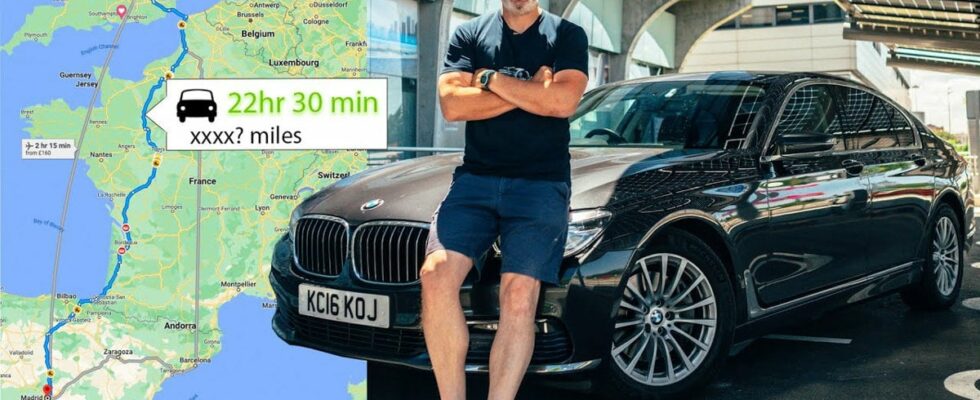The distance between London and Madrid is over 165 miles long, with a further five miles on the Eurotunnel train under the English Channel. With a tank that holds 78 liters, an average consumption of no more than 0.47 liters per mile was thus required to meet the challenge.
Although the type of fuel is not explicitly mentioned in the video, the pump price shown after about one minute and 16 seconds indicates that the car was fueled with Shell V-Power Diesel.
To optimize the conditions, the BMW also had Michelin ePrimacy tires, which are known for their low rolling resistance.
DON’T MISS:
That’s how you know which country the car comes from – all abbreviations
Speeding fines: Penalties and fines on roads in Sweden
The art of driving far
Although Achilles left London early to avoid rush hour traffic, the start was somewhat jerky. However, that did not prevent the average consumption from being pushed down below 0.4 liters per mile before the car rolled on board the train to France.
During the trip through France, Achilles chose to use the speed limiter instead of cruise control, as the latter tends to cause unnecessary braking and acceleration.
By maintaining a steady speed of around 100 km/h, he managed to keep consumption at a very low level.
Challenges in the Pyrenees
When the car reached the Pyrenees and crossed the border to Spain, consumption increased slightly. The hilly terrain, the headwind and the temperature of over 30 degrees meant that the AC had to work hard.
Despite this, the average consumption was down to around 0.35 liters per mile when they left France.
DON’T MISS:
World’s fastest car 2024 – top 5 list
The world’s most expensive car – top list 2024
Madrid was reached by a margin
Efficiency gains from France diminished slightly in Spain’s hilly landscape, but the BMW still rolled into Madrid with six liters left in the tank and an estimated range of another 15 miles.
The average consumption for the entire trip landed at 0.37 liters per mile, which means that the BMW 730d has a theoretical range of over 180 miles.
A feather in the cap for diesel
The trip, which took 22.5 hours, confirms the diesel cars’ unique ability to combine long range and fuel efficiency.
Although electric cars are gaining ground, there are still few that can match the diesel when it comes to driving long distances without stopping.
DON’T MISS: Our podcast about cars – Under the Hood
